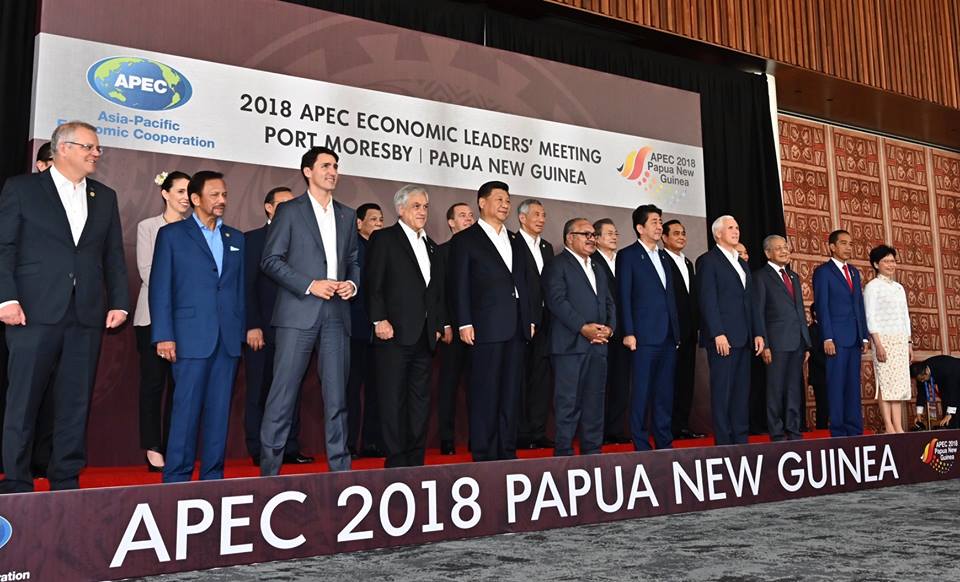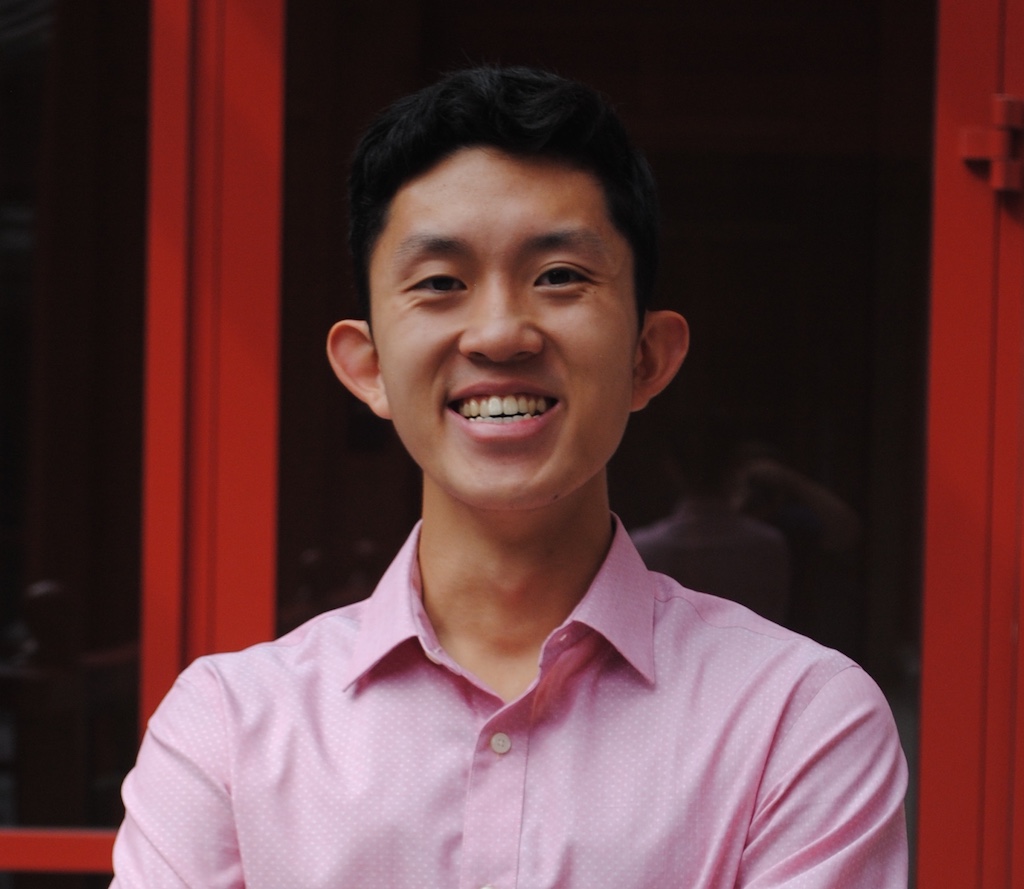SinoTech: Commerce Department, United States Trade Rep. Deepens Scrutiny of Technology Transfer and Chinese Trade Practices Ahead of Trump-Xi Meeting at G20 Summit
On Nov. 19, the Commerce Department published a notice seeking public comment on proposed export controls under fourteen categories of emerging technologies.

Published by The Lawfare Institute
in Cooperation With

On Nov. 19, the Commerce Department published a notice seeking public comment on proposed export controls under fourteen categories of emerging technologies. Some of the enumerated technologies, such as adaptive camouflage, have explicit military applications, though many others, especially in the biotechnology category, carry civilian applications too. Artificial intelligence and machine learning technology feature prominently on the list. In August, the Foreign Investment Risk Review Modernization Act (FIRRMA) expanded the ability of the Committee on Foreign Investment in the United States (CFIUS) to block foreign purchases of U.S. firms. The proposed export controls will further restrict cross-border technology transactions.
The department will accept public comments on its notice until Dec. 19. Some commentators have already publicly criticized the proposed controls on Artificial Intelligence (AI) technology. Facing the risk of “collateral damage,” U.S. firms could well “scale back” on AI development to avoid export controls. AI regulation could also prove to be a tremendous challenge; firms often develop AI functionalities by posting open-source software on the internet. Yet despite the ongoing U.S.-China trade war, cooperation on AI has continued between Chinese and American firms. The American chipmaker Nvidia recently announced that it would sell its “Xavier” artificial intelligence chip to XPeng Motors, Singulato Motors and SF Motors, Chinese startups that develop autonomous-driving technology. Of course, the proposed list of technologies remains preliminary and will be fine-tuned during and after the consultation period. Moreover, as one analyst has noted, the Commerce Department could follow up with a second comment period.
Then on Nov. 20, the Office of the United States Trade Representative (USTR) released a report accusing China of continuing to engage in unfair trade practices. The detailed report noted the persistence of practices such as “forced technology transfer” and “cyber-enabled theft of intellectual property.” The report is a follow-up to a March USTR report following an investigation under Section 301 of the Trade Act of 1974, which allows the United States to impose sanctions on countries that engage in “unfair trade practices.” That report served as justification for President Donald Trump’s imposition of tariffs on $250 billion in Chinese imports.
The World Trade Organization (WTO) has agreed to launch an investigation into American allegations of Chinese trade practices and could return its findings as early as next year. Kevin Hassett, chairman of President Trump’s Council of Economic Advisors, has advised an even more provocative step, however; in a BBC interview, Hassett questioned whether the United States might “pursue evicting China from the WTO.” Chinese officials criticized the USTR report, with a Chinese Ministry of Commerce spokesperson describing the accusations as “groundless” and reflective of American unilateralism.
President Trump and Chinese President Xi Jinping will meet to discuss trade issues and the U.S.-China relationship at the G20 summit, which begins on Nov. 30. The odds for rapprochement seem slim. Trump has said he expects to raise the existing tariff rate on $200 billion of Chinese goods from 10 percent to 25 percent and has hinted at additional tariffs at the beginning of the new year. And as the recent updates from the Commerce Department and USTR demonstrate, there remains widespread dissatisfaction within the U.S. government regarding China’s trading practices.
APEC summit highlights continued U.S.-China tensions
Images of world leaders smiling in coordinated red and yellow silk shirts belied the tensions coursing through the Asia-Pacific Economic Cooperation summit (APEC) hosted by Papua New Guinea on Nov. 17 and 18. The annual summit gathers representatives from twenty-one Pacific Rim economies to discuss issues including trade, technology and economic development. This year, however, the normally staid proceedings were caught in the crosshairs of U.S.-China trade frictions. For the first time in three decades, the representatives did not agree on a joint communique to be issued after the summit. The discussions foundered over proposals for reform of the WTO, likely led by the United States. In a Washington Post column, Josh Rogin also noted Chinese objections to the line, “We agree to fight protectionism including all unfair trade practices,” based on a sense that it unfairly pointed fingers at China.
The failure to reach an agreement on joint communique wasn’t the only the sign of tensions at the summit. One American official accused Chinese diplomats of engaging in “tantrum diplomacy” both at the APEC summit and in other international meetings. In the midst of communique negotiations, four Chinese officials allegedly attempted to enter the office of the foreign minister of Papua New Guinea, who had refused a meeting with them as he sought to maintain an appearance of neutrality. Wang Xiaolong, the director general of the Chinese Ministry of Foreign Affairs’ Department of International Economic Affairs, denied reports of the incident as “simply not true.”
Outside the summit’s diplomatic kerfuffles, the back-to-back speeches of President Xi and U.S. Vice President Mike Pence also presented competing views on trade and the future of the Asia-Pacific. In his speech, Vice President Pence highlighted the free and open Indo-Pacific strategy that President Trump introduced at last year’s APEC summit in Vietnam. He discussed U.S. trade with Pacific nations while taking a swipe “at countries that use unfair trade practices.” He also explicitly critiqued the debt burden associated with projects under China’s Belt and Road Initiative stating, “We don’t drown our partners in a sea of debt… We do not offer a constricting belt or a one-way road.” Vice President Pence’s speech was accompanied by an announcement by the Trilateral Partnership—Australia, Japan, and the United States—of increased infrastructure investment in the region including spending on digital connectivity and the launch of a U.S.-ASEAN Smart Cities Partnership to improve cyber infrastructure. The latter may be an attempt to respond to the active role Chinese telecommunications firms already play in the region.
Meanwhile in his speech, President Xi, who had arrived early for a state visit to Papua New Guinea, defended the Belt and Road Initiative as “an open platform for cooperation” without “any hidden geopolitical agenda.” He called for openness and adherence to a rules-based order, stating that, “One who chooses to close his door will only cut himself off from the rest of the world.” Xi also emphasized innovations in science and technology in his speech including developments in 3D printing and AI. Finally, he pledged that China would take steps to improve protection of IP rights, increase market access and raise imports. While commentators had expected the APEC summit to highlight China’s growing influence in the South Pacific, instead the meeting appeared to undermine China’s soft power efforts and reinforce the ways that U.S.-China trade tensions are spilling over into new fora.
In Other News
- The U.S. government has undertaken an “extraordinary outreach campaign” to encourage allies to get local telecommunications firms to avoid purchases from Huawei. American officials briefed counterparts in Germany, Japan and Italy about potential cybersecurity risks associated with Huawei components. Huawei has been effectively banned from selling to the U.S. government since 2013. The campaign comes amidst mounting concerns about the use of Huawei technology in 5G networks. In response to the news, Chinese technology stocks—including those of some Huawei suppliers—tumbled on Nov. 23.
- Chinese researcher He Jiankui announced that he had produced genetically-edited babies for the first time. He claimed to have used CRISPR-Cas9, a gene editing tool, to edit single-cell embryos and make them HIV-resistant by deleting the CCR5 gene. Two of these embryos developed into twin girls who were recently born. He had returned to China under the Thousand Talents Program, a Chinese initiative to recruit top scientists from abroad. He did not release data or additional support for his findings, and institutions affiliated with He denied involvement. Many members of the scientific community—both in China and abroad—expressed concern about the news. The Genetics Society of China’s Gene Editing Research Branch and Chinese Society for Cell Biology’s Stem Cell Biology Branch released a statement noting that at this stage they “resolutely oppose clinical experiments using genetic editing for reproductive purposes.”
- A story in Bloomberg explores the on-the-ground effects of the Trump administration’s export controls on Fujian Jinhua. The Department of Commerce banned U.S. sales to the company in October 2018 following allegations of IP theft from U.S. chipmaker Micron. Since then, staff from American suppliers who worked with the company have departed from factories in Fujian Province and expansion plans have stalled. As a substitute for components from the United States, the company is seeking out parts from other countries.
- The South China Morning Post reported that the U.S. Embassy in Beijing had revoked the ten-year multiple-entry visas held by a few Chinese researchers who focus on U.S.-China relations. The United States and China first introduced the ten-year multiple-entry visa in 2014. Visa policies may become yet another casualty of deteriorating relations. In June, the Trump administration announced that the length of visas for Chinese graduate students studying robotics, aviation, and advanced manufacturing would be cut from five years to one year.
- Amidst the debate about competition between the United States and China over AI, an article in the New York Times suggests that “the ability to tag [] data may be China’s true A.I. strength, the only one that the United States may not be able to match.” China has a growing industry of start-ups employing individuals to tag images so that they can be used for computer vision. Many of these start-ups are located in lower-tier cities and employ workers who once would have migrated for factory work. Also on the AI front, a study session of the National People’s Congress Standing Committee Chairpersons' Council met this weekend to discuss legislative and regulatory efforts for AI development.
Commentary and Analysis
Elsewhere on Lawfare, Anthea Roberts, Henrique Choer Moraes and Victor Ferguson argue that the United States and China, along with other countries, have increasingly “engaged in geoeconomic strategies,” i.e.: an “admixture of the logic of conflict with the methods of commerce.” Robert Ross contends that “US naval strength in East Asia” is on the decline, citing how the Chinese Navy has made both quantitative and qualitative strides in recent years.
On this week’s Lawfare Podcast, John Carlin, a former assistant attorney general for the Justice Department’s National Security Division, discusses his new book, co-authored with Garrett Graff and entitled “Dawn of the Code War: America’s Battle Against Russia, China, and the Rising Global Cyber Threat.” Carlin notes that the United States has been forced to improve intelligence sharing across agencies (13:46), while also stressing how the government needs the cooperation of the private sector to effectively tackle cybersecurity threats (44:53).
As the Trump-Xi meeting at the G20 summit approaches, a number of outlets have published multi-piece analyses of China’s rise. The National Interest published a two-piece series on the “Chinese century,” arguing that although China has energetically attempted to “enhance its position in Asia...the record of outcomes is decidedly mixed.” The first piece examines Chinese initiatives in two sectors: trade and economics and diplomacy and alliances; the follow-up piece analyzes another two sectors: the military balance and ideological competition. Similarly, the New York Times launched its “China Rules” series on November 18. Philip Pan’s series-opener, entitled “The Land That Failed to Fail,” contextualizes the U.S.-China relationship, arguing that China’s Communist Party leaders have “defied expectations again and again.” In another article in the series, Megan Specia concludes that the Chinese technology sector, like the country at large, has made “huge strides”; inspiration now “flows both ways, with American companies taking notes from Chinese counterparts.”
A number of commentators have also turned to examine China’s social credit system. Writing in Foreign Policy, Jamie P. Horsley, a senior fellow at Yale Law School’s Paul Tsai China Center, debunks some of the myths surrounding the social credit system. The Chinese government, Horsley explains, is not yet “assigning a single score that will determine every aspect of every citizen's life.” On the Sinica Podcast, Manya Koetse and Rogier Creemers also discuss the myth and reality behind China’s social credit system. They argue that the system is not a one-dimensional relationship between the state and its citizens (13:19) and discuss local pushback to local credit systems (37:16). Meanwhile, the Beijing municipal government unveiled a plan to assign individual citizens “personal creditworthiness points” by 2020.





